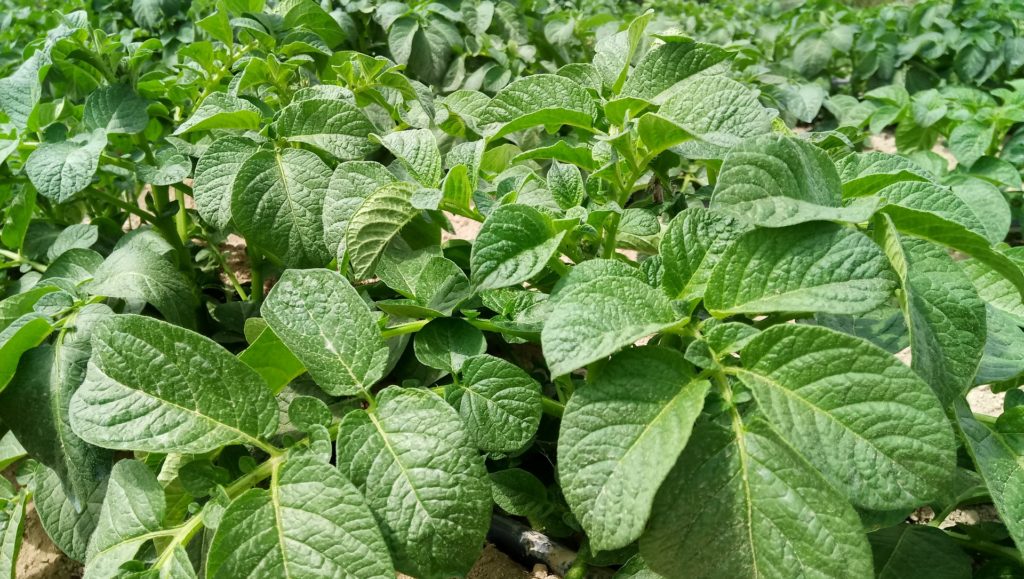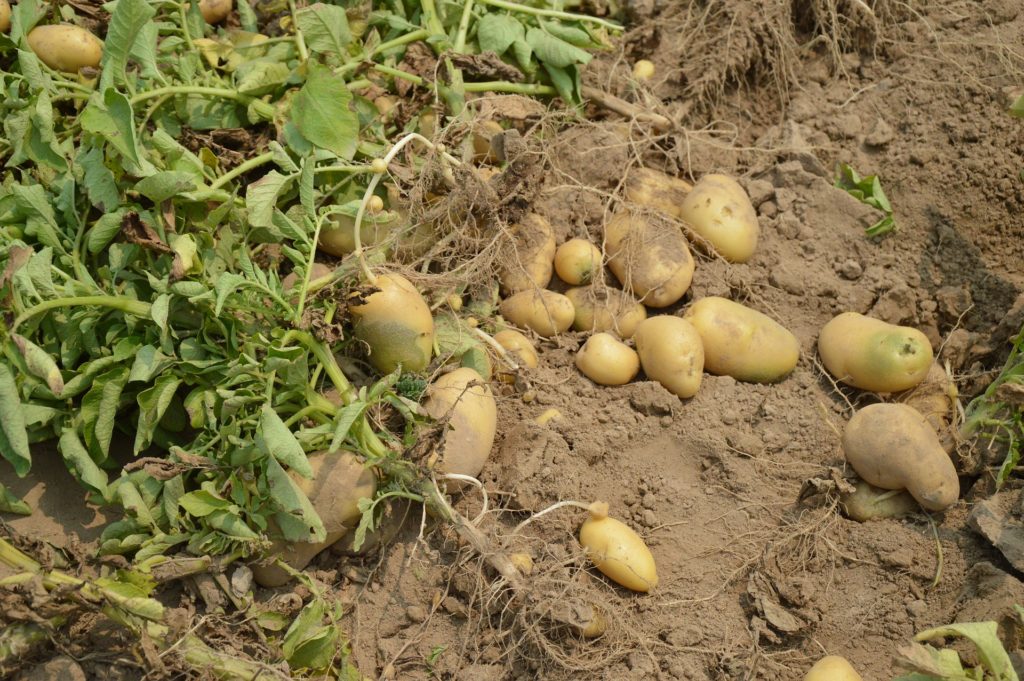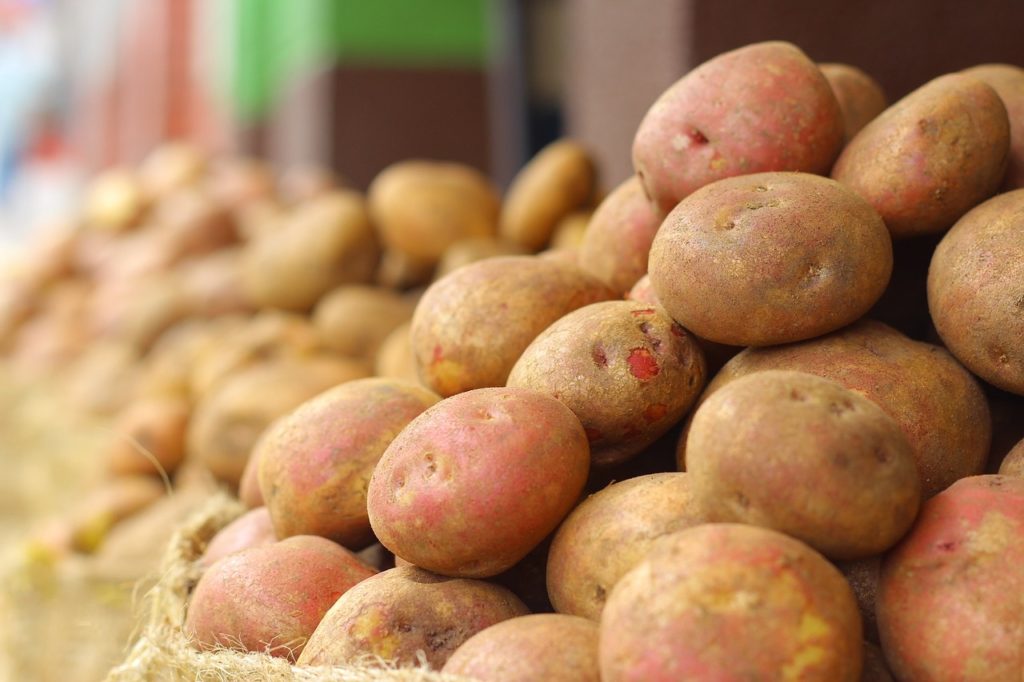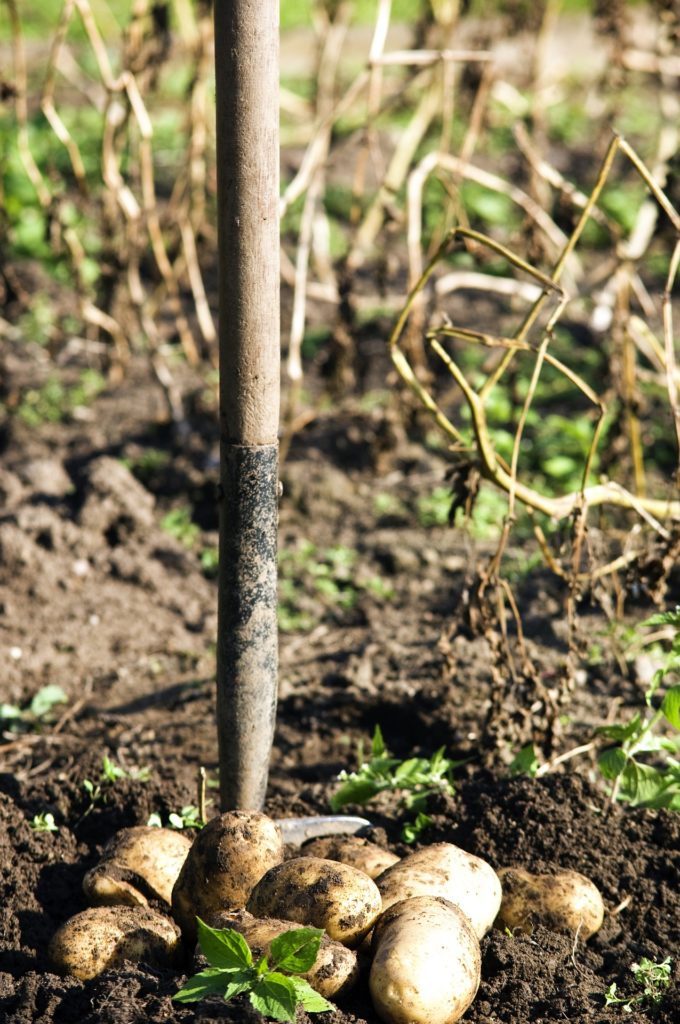It’s exciting when you see your young potato plants taking off, reaching high towards the sky.
As they continue to grow, anticipation sets in for the harvest:
How big are they now?
When can I pull the potatoes up?
Are they ripe already?
Can I eat them NOW?
The good news is, potatoes can be harvested at different stages of growth: it all depends on how you like them!
So, just HOW do you get those tasty little tubers out of the ground to prepare your signature baked potato? Well, that’s easy!

How Are Potatoes Harvested?
If you are growing potatoes at home or on the family farm in a smaller plot, expecting less that 1,000 pounds of potatoes, then the potatoes will likely be harvested manually.
Investing in harvesting equipment to automate the process just isn’t worth it with such small plots. However, potatoes aren’t too hard to dig up by hand!
Potatoes are grown in loose soil, which assists the plant in lifting. Using a pitch fork, gently insert the tines into the soil 18″ from the plant’s stem. Start at the corner or edge of the bed so that you reduce the risk of injury to tubers. Gently lift the soil until the plant’s root system appears loose. Gently pull the plant, and remove any tubers that are attached to it.
You will need to gently dig in the dirt around the potato plant’s hole, as you will likely find more potatoes that broke off due to their weight.
Can a Tractor Be Used to Harvest Potatoes?
On larger farms, mostly on a commercial scale, potatoes are harvested with commercial farm equipment. This automates the process, making it much faster. However, this commercial farm equipment is incredibly expensive, and is not an affordable or reasonable investment for much other than a large operation. Therefore, you will only see this type of equipment on large potato farms.
I will say that watching a commercial farm being harvested is absolutely mesmerizing. Check out the video below; isn’t it amazing how quickly and efficiently these potatoes are harvested? If you buy potatoes in bulk at the grocery store, this is exactly what you would expect to find during harvest time.
When Do You Know Potatoes Are Ready to Harvest?
Potatoes tend to be a long-season crop. It may be a shorter wait for new potatoes, but most people grow in anticipation of large, mature potatoes. So, how do you know when potatoes are ready to harvest? Well, it just depends on which type you’re after!
- If you are trying to figure out when to harvest a crop of young, new potatoes, you should pay special attention to the flowers. When the potato plants have started to bloom, you can begin taking new potatoes. Once the flowers appear, the plant will begin to store more energy within the tubers. Thus providing you with large potatoes at the end of the season.
- If you are looking to harvest large potatoes, there are a few different signs and procedures to follow. Once the blooms fade, watch for the plants to turn yellow. The potato plants will start to fall over, and they should not be watered for two weeks before harvest. Once curing and die back have completed, it’s time to harvest!

How Do You Take Care of Potatoes That Are Close to Being Ripe?
As potato plants near harvest, take away water and do not fertilize the plants. You should allow the plants to begin the die back process, and the soil should be allowed to dry. Dry soil allows the tubers to cure underground before you harvest them. Curing is vital for tough, protective skins that will keep the potato from rotting through the winter. If skins aren’t cured, they are far more susceptible to injury and damage, which greatly increases the risk of rot.

How Long Will Harvested Potatoes Store For?
If a potato is not damaged during harvest, and if it is allowed to cure properly, you have the potential to store the potatoes for up to 6 months. Potatoes will generally last for between 3 and 4 months. You must provide the potatoes with a root cellar environment.
They should have some humidity to keep the tubers from drying out, but not enough to encourage moisture to build up. They should be stored in a very dark place, with no access to light. You should keep the temperature as steady as possible; going back and forth between cool and warm temperatures could signal spring to the potatoes, causing them to sprout. Never store onions with potatoes either, as this could ruin the shelf life very quickly.
